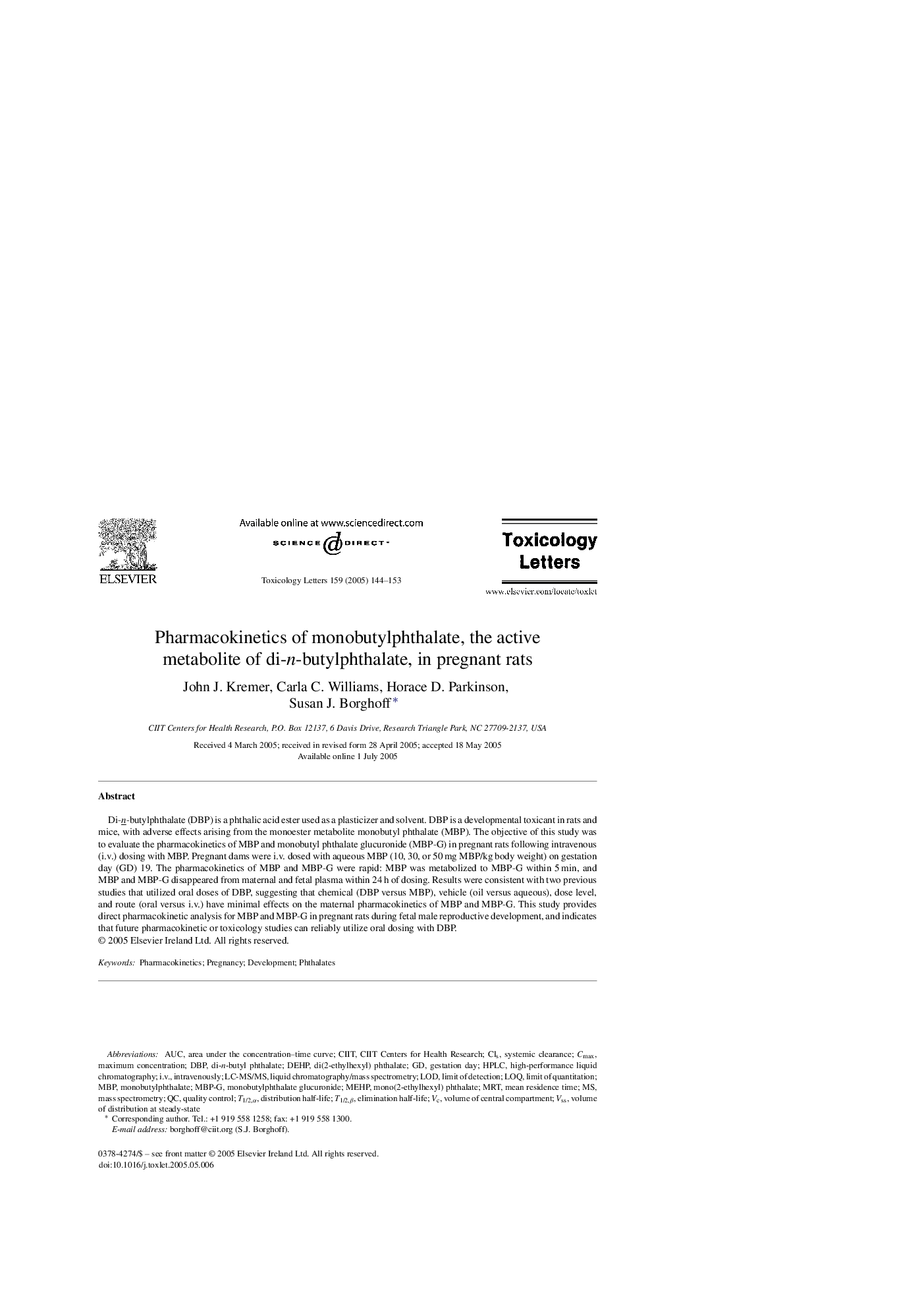| Article ID | Journal | Published Year | Pages | File Type |
|---|---|---|---|---|
| 9037357 | Toxicology Letters | 2005 | 10 Pages |
Abstract
Di-n-butylphthalate (DBP) is a phthalic acid ester used as a plasticizer and solvent. DBP is a developmental toxicant in rats and mice, with adverse effects arising from the monoester metabolite monobutyl phthalate (MBP). The objective of this study was to evaluate the pharmacokinetics of MBP and monobutyl phthalate glucuronide (MBP-G) in pregnant rats following intravenous (i.v.) dosing with MBP. Pregnant dams were i.v. dosed with aqueous MBP (10, 30, or 50Â mg MBP/kg body weight) on gestation day (GD) 19. The pharmacokinetics of MBP and MBP-G were rapid: MBP was metabolized to MBP-G within 5Â min, and MBP and MBP-G disappeared from maternal and fetal plasma within 24Â h of dosing. Results were consistent with two previous studies that utilized oral doses of DBP, suggesting that chemical (DBP versus MBP), vehicle (oil versus aqueous), dose level, and route (oral versus i.v.) have minimal effects on the maternal pharmacokinetics of MBP and MBP-G. This study provides direct pharmacokinetic analysis for MBP and MBP-G in pregnant rats during fetal male reproductive development, and indicates that future pharmacokinetic or toxicology studies can reliably utilize oral dosing with DBP.
Keywords
DEHPCLSMRTMBPDBPi.v.LOQMEHPdi-n-butyl phthalateCmaxAUCLC-MS/MSmono(2-ethylhexyl) phthalateVSsPregnancymaximum concentrationintravenouslydi(2-ethylhexyl) phthalateDevelopmentgestation dayMass spectrometryPharmacokineticsPhthalatesLodlimit of detectionlimit of quantitationarea under the concentration–time curveMean residence timeelimination half-lifeLiquid chromatography/mass spectrometryhigh-performance liquid chromatographyHPLCquality control
Related Topics
Life Sciences
Environmental Science
Health, Toxicology and Mutagenesis
Authors
John J. Kremer, Carla C. Williams, Horace D. Parkinson, Susan J. Borghoff,
